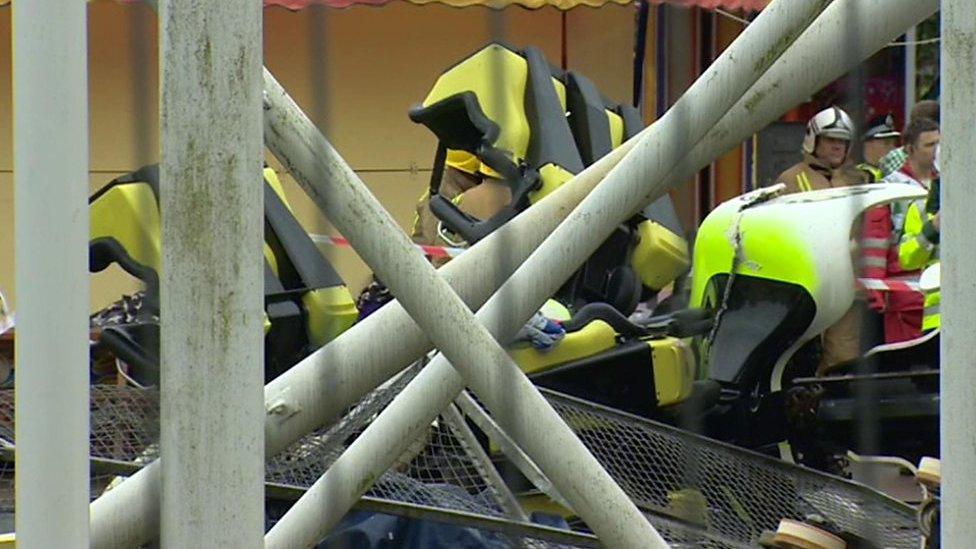M&D's rollercoaster crash victims get £1.2m in damages payouts
- Published
M&D's Tsunami rollercoaster had passed its annual safety check just weeks before
Ten victims of the M&D's rollercoaster crash in 2016 have secured £1.2m in damages.
Seven children were among the people injured in the crash at the theme park in Motherwell, North Lanarkshire.
It happened after five gondolas on the Tsunami inverted rollercoaster detached from their rails at a bend and fell to the ground.
The 10 victims have now successfully sued theme park bosses over physical or psychiatric injuries.
M&D's owners have already been fined £65,000 over health and safety breaches.
The company pleaded guilty to charges relating to the Health and Safety at Work Act at Hamilton Sheriff Court in March this year.
Lawyers for the victims said the lives of some of them had been "permanently and irreversibly affected".
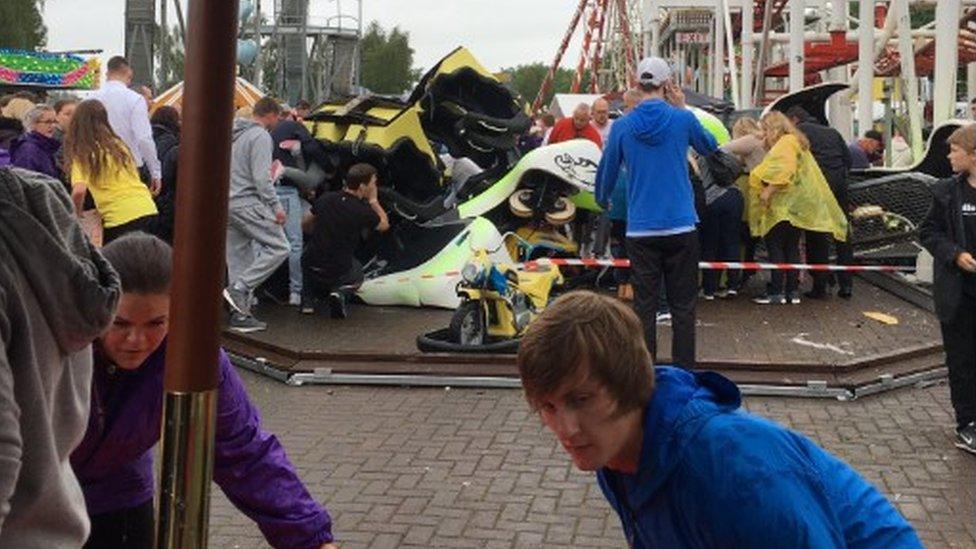
Two boys, aged 11 and 12, suffered serious injuries in the crash
David Nellaney, of Digby Brown Solicitors in Glasgow, said it had been proved that the accident would not have happened if the rollercoaster had been properly inspected and maintained by M&D's bosses.
He added: "The failure to do so has had a dramatic and lasting impact on the victims and their families.
"These victims had their lives changed through no fault of their own and while no amount of compensation can undo their pain, it may at least contribute to improving their future."
Two boys, aged 11 and 12, suffered serious injuries - including chest and limb damage - in the incident.
Four other boys, a 14-year-old girl and a man and a woman, both aged 19, were also treated in hospital.
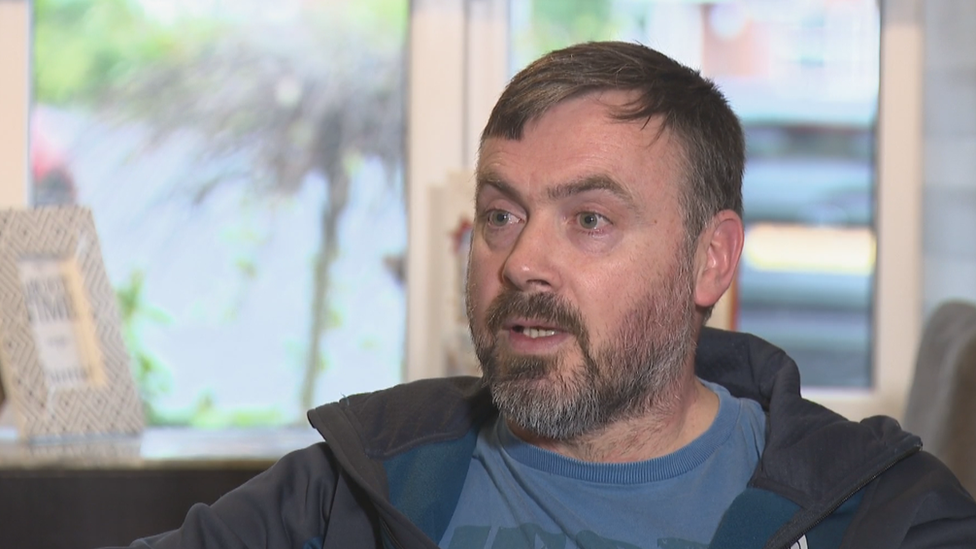
Craig Chalmers' son was the youngest victim
Craig Chalmers' son Ben was the youngest victim and suffered two punctured lungs, a triple pelvic fracture, bruised spleen, bruised kidney and broken femur.
The schoolboy also had to be resuscitated twice and spent six days in an induced coma at the Queen Elizabeth University Hospital in Glasgow.
Mr Chalmers told BBC Scotland the settlement offered some closure but said he still had concerns about the park.
He said: "They said they have made changes to improve health and safety.
"Why did they not make it pre-accident? They had numerous near misses, shall we say.
"If they had acted on them could they have prevented the accident? I think 100%."
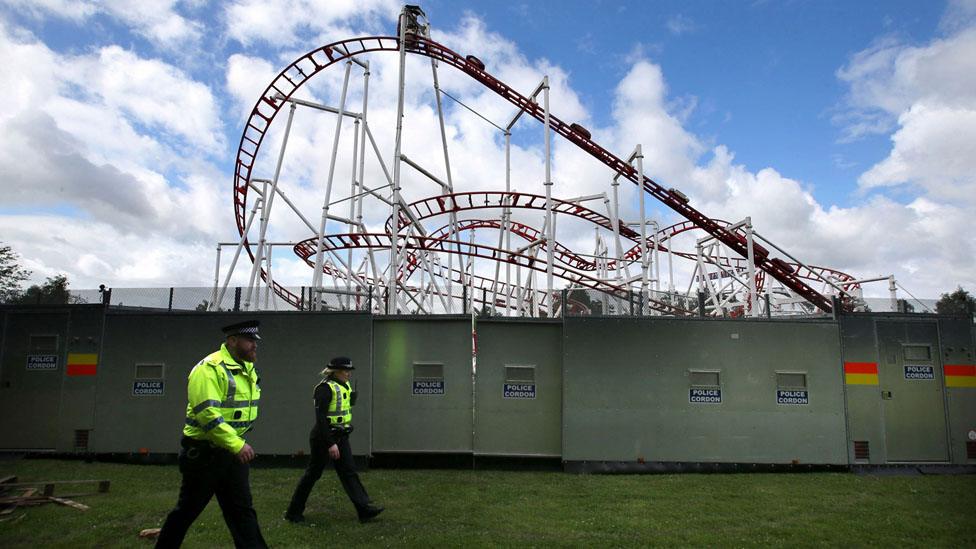
A police cordon was put in place following the crash
The Tsunami, which travelled at up to 40mph through corkscrew turns and loops, never reopened and it was finally dismantled in February 2017.
An inspector an inspector who passed the ride as safe 16 days before the accident was subsequently banned.
The theme park was shut for investigations but a partial reopening was sanctioned four days after the accident.
It was fully reopened to the public just over three weeks later.
M&D Leisure later pleaded guilty to failing to ensure that the rollercoaster was maintained, in efficient working order and in good repair.
A health and safety investigation revealed weld repairs on axles of the passenger cars were inadequate, leading to the failure of the axle suspension on the five-car train.
- Published8 March 2019
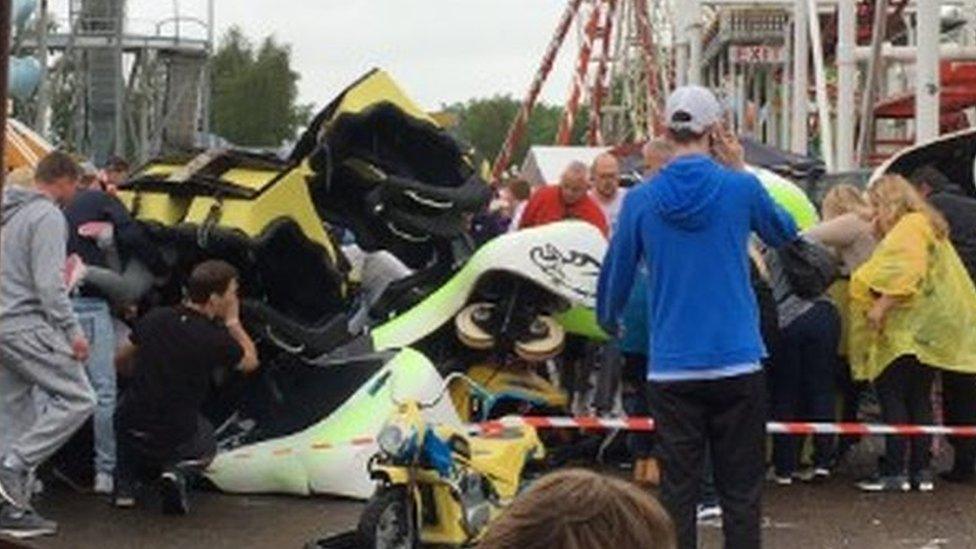
- Published27 June 2016
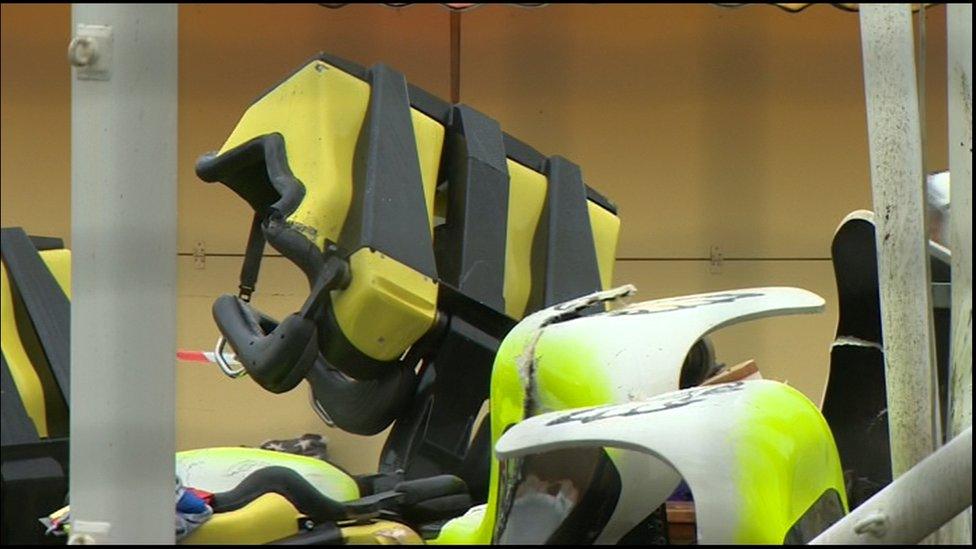
- Published18 July 2016
